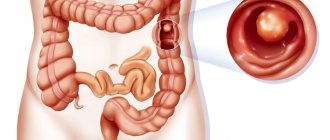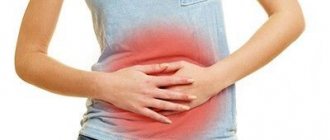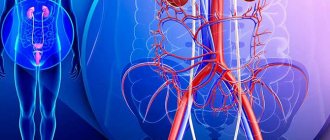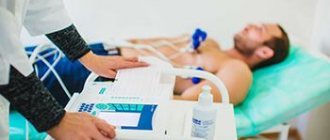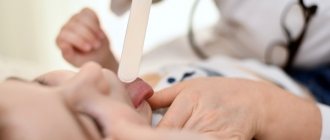Human immunity is directly related to the intestinal microflora, respiratory system and genital area. Tests for dysbacteriosis are a reliable and affordable way to clarify the origin of ailments and erect a reliable barrier to pathogenic strains. An imbalance, the disappearance of beneficial microorganisms, is often the root cause of many chronic diseases. Leads to the accumulation of toxins, atrophy of the gastrointestinal mucosa, poor absorption of vitamins and microelements, and activates the action of viruses.
Features of the analysis for dysbacteriosis
Feces are the end product of human life. They carry information about the quality and speed of absorption of nutrients, the condition of the organs involved in digestion. The main task of the analysis for dysbiosis is to provide information about the ratio of beneficial, harmful and opportunistic bacteria in the body. When the colony of beneficial species decreases, harmful bacteria begin to dominate the intestines unhindered, causing bloating, problems with stool, skin, abdominal pain, and general malaise.
The ambiguity of the reasons for the disruption of interaction between species significantly complicates the diagnosis of diseases. Therefore, in many cases, when clarifying the diagnosis and choosing tactics for successful treatment, key indicators in the analysis of stool for dysbacteriosis play a decisive role:
- Color, smell, consistency.
- Presence of undigested food particles.
- Presence of blood, mucus.
- Leukocyte count.
The obtained result of the study allows the doctor to notice in a timely manner
- presence of problems with the stomach, pancreas;
- the beginning of the inflammatory process;
- helminth infection;
- lack of beneficial microflora.
In order to monitor the dynamics of treatment, an extended analysis for dysbacteriosis can be prescribed to the patient repeatedly. In some cases, when a more in-depth examination is required, the patient must undergo additional tests for worms and enterobiasis, pathogenic bacteria.
By contacting the Euromedperstizh multidisciplinary clinic in Moscow, you will be confident in the quality of any tests. The bacteriological laboratory, equipped according to European standards, is our pride. Modern equipment and knowledge of advanced techniques allow us to perform traditional and unique clinical diagnostic studies. High accuracy of the results of stool analysis for dysbacteriosis, immunological study of urine, bile, blood and cerebrospinal fluid is guaranteed.
Analyzes are performed in 2 ways: traditional and inexpensive bacteriological and advanced biochemical, providing an answer within 1 day.
So, there is no such thing as “dysbacteriosis”?
Of course have. For example, pseudomembranous colitis - severe inflammation of the colon after an antibiotic - is a real dysbiosis: competitors have died, and therefore Clostridium difficile multiplies. Just to treat this, there is absolutely no need to state the obvious - the composition of bacteria in the intestine has changed. It is enough to confirm the infection (identify C. difficile toxins) and prescribe treatment.
Intestinal microflora, without a doubt, affects all processes in our body. By transplanting stool from an obese mouse to a mouse of normal weight, we induce obesity in the latter. The composition of gut bacteria is fundamentally different between people with anxiety and depression. Well, adding the probiotic Bacteroides fragilis to mice that have been artificially induced to have autism improves their social skills. Read the popular book “Look What's Inside You” by the famous microbiologist Rob Knight: our knowledge about microflora is colossal, but we are just beginning to apply it in practice (that is, to treat diseases).
The composition of bacteria can and should be studied. This is the subject of an ambitious international study, the Human Microbiome Project, with a budget of $115 million. Naturally, no “stool cultures” are used. Metagenomics methods are used to analyze the microbial jungle of the gut. They make it possible to describe how many unique DNA sequences are present in a particular person, which groups of bacteria predominate and which are absent. By the way, when such technologies (for example, 16S rRNA sequencing) appeared, it turned out that 75% of the species detected during genetic analysis of the same feces are not known to science at all.
Indications for testing for dysbacteriosis
Living in an urbanized world of haste, constant stress, physical overload and poor nutrition leads to the destruction of beneficial intestinal microflora and, as a result, to a decrease in immunity. Actually, this is the essence of dysbiosis: there are a lot of bacteria, but there are few of them necessary for the human body. Frequent constipation, heartburn, nausea, belching, bad breath and even “snudges” in the corners of the lips are already a good reason to get tested for dysbacteriosis. In addition, the prerequisites for prescribing a bacteriological examination of stool are:
- flatulence, feeling of heaviness and discomfort in the stomach;
- persistent diarrhea, constipation, foul-smelling stool;
- noticeable loss of appetite, lethargy, drowsiness, black or gray stools;
- rejection of certain foods;
- previous treatment with hormonal drugs and antibiotics;
- severe forms of allergies that are difficult to treat conservatively;
- sudden weight loss, bloating, cheesy coating on the tongue;
- personal request of the patient.
The sudden appearance of a skin rash, unstable stool, mucus and blood in the excrement should also alert you. Only a specialist can determine the need for a stool test for dysbacteriosis: a therapist, an infectious disease specialist or a gastroenterologist. You can contact him with your complaints and symptoms that occur after consuming fatty heavy foods or alcohol. If the doctor considers the analysis necessary and useful for you, he will give a referral, and after receiving the result, he will provide a transcript for free. Prescribing a study on your own simply does not make sense.
Other examination methods
There is another, less common, but more accurate and faster method of microbiological examination - chromatography-mass spectrometry of microbial markers (CMS, or as it is also called MSMM). It was developed by Doctor of Biological Sciences G.A. Osipov and is used in some laboratories.
This method allows you to study the microbiological composition of various biological materials - blood, urine, saliva, vaginal discharge, etc. The analysis is carried out within 3 hours and allows you to determine the presence of 50 microorganisms in the test material without inoculation, using the so-called signal molecules (microbial markers).
Preparation and rules for collecting material
Strict adherence to the rules for preparing and taking samples of biomaterial is the key to the reliability of the result. To carry out the procedure, you must prepare the necessary container in advance - a pot or a duck. Wash thoroughly without using chemical detergents. Treat with medical alcohol and rinse with boiling water. Before defecation, perform hygiene of the anal area.
- For analysis of dysbacteriosis, stool obtained naturally without the use of laxatives and enemas is selected. Taking carrier medications and using medicinal suppositories should be stopped 3-4 days before submitting the material for research.
- 72 hours before the procedure, avoid drinking alcohol, meat, fish, and foods that color feces, change the smell and consistency. For example, beets, kiwi, blueberries, strong coffee.
- For 2-3 days, do not take medications that affect intestinal motility and accelerate the removal of food from the stomach.
- Women are not recommended to take a stool test for dysbiosis during menstruation.
- Collect the biomaterial in a sterile pharmaceutical container, tightly closed with a lid. Deliver to the laboratory within 4-8 hours. Do not freeze!
A sample taken earlier than 4 days after intestinal endoscopy or stomach radiography using contrast enhancers is considered unsuitable for research.
The most popular question, how to take 10-15 g of feces into a container, can be solved very simply. In order not to struggle with cotton swabs, matches and toothpicks, the easiest way is to use a plastic teaspoon.
References
- Methodological recommendations “Bacteriological diagnosis of intestinal dysbiosis”, approved. Ministry of Health of the RSFSR - 1977.
- Industry standard “Protocol for the management of patients with intestinal dysbiosis.” OST 91500.11.0004-2003.
- Determination of dysbiotic changes in the gastrointestinal tract using markers of intestinal contents. Federal clinical guidelines - 2005.
- Clinical recommendations of the national association of specialists in the control of infections associated with the provision of medical care and the all-Russian public non-profit organization “Association of Coloproctologists of Russia” for the diagnosis, treatment and prevention of Clostridium difficile-associated diarrhea (CDI) - 2021.
- Chan BK, Abedon ST, Loc-Carrillo C. Phage cocktails and the future of phage therapy. Future Microbiol. 2013 Jun;8(6):769-83.
- Robles Alonso V, Guarner F. Linking the gut microbiota to human health. Br J Nutr. 2013 Jan;109 Suppl 2:S21-6. Review.
Period of execution
Analysis results can usually be collected no earlier than 5-7 days after delivery, since research takes time.
Citizens are received from Monday to Friday at the address: Naberezhnye Chelny, Nizametdinova St., 14, at the reception on the 1st floor from 8.00. until 10.00.
Results are issued from Monday to Friday at the registration desk from 12.30. until 15.00.
A timely and correctly selected analysis for dysbacteriosis is the key to successful treatment.
You can get detailed information by calling a specialist by phone.
The article was helpful! Let others know! ?
Do you have a question? Write to us!✍
Share link:
- Seal
- Telegram
Causes of dysbiosis
Dysbacteriosis never occurs primarily; it develops as a result of dysfunction of organs and systems or under the influence of medications and chemicals that negatively affect microorganisms.
The following factors predispose to microflora disturbances:
- acute and chronic stress;
- excessive physical activity;
- unfavorable environmental conditions, harmful production factors;
- genetic predisposition;
- immunodeficiency states;
- pregnancy and hormonal imbalance, for example, hyperandrogenism in women;
- jet lag, acclimatization;
- active use of antibiotics, cytostatics, sulfonamides, hormone replacement therapy;
- injuries and inflammatory diseases accompanied by immune activation.
One of the causes of skin dysbiosis is excessive hygiene and the use of aggressive care products that wash away the protective water-fat layer from the epithelium.
The intestinal microbiota suffers in the following cases:
- the presence of various types of chemical additives in food - sodium salts and sulfurous acid, metal nanoparticles and antibiotics;
- fasting or a sharp change in diet, the abundance of animal fats and proteins, sugar, starch, lack of fiber, vitamins and minerals;
- infectious processes, helminthic infestation in the intestines;
- decreased digestive function of internal organs due to pancreatitis, hepatitis, gastritis and other diseases;
- impaired intestinal motility;
- surgical interventions on the gastrointestinal tract.
Complications of dysbiosis
Dysbiosis is a syndrome that contributes to the development of many diseases. Its connection with the following pathologies has been scientifically confirmed:
- neuropsychiatric disorders: depression, Alzheimer's disease, multiple sclerosis, schizophrenia, autism, Parkinson's disease;
- insulin resistance, dyslipidemia, obesity, type 2 diabetes mellitus, arterial hypertension, fatty liver hepatosis;
- autoimmune pathologies: type I diabetes mellitus, rheumatoid arthritis, systemic lupus erythematosus, primary sclerosing cholangitis;
- allergic diseases: bronchial asthma, atopic dermatitis, food allergies;
- systemic inflammation: Crohn's disease, ulcerative colitis, irritable bowel syndrome, celiac disease and colorectal cancer;
- infection with sexually transmitted diseases, including HIV infection;
- with genital dysbiosis during pregnancy - premature birth;
- cardiovascular diseases due to the activation of pathogenic periodontal bacteria, which contribute to atherosclerotic processes and the development of coronary artery disease;
- adenocarcinoma and squamous cell carcinoma of the esophagus with dysbacteriosis of the oral cavity.
Treatment of dysbiosis
If a deficiency of bifidobacteria and lactobacilli and an excess of opportunistic bacteria or the appearance of pathogenic microorganisms are detected in the body, this indicates that it is necessary to restore normal microflora. Probiotics are used to treat dysbiosis. Complete restoration of the body's own microflora, not only in composition, but also in activity, is possible only with the help of preparations containing bifidobacteria and lactobacilli of the most physiological (characteristic) species for humans. Beneficial bacteria take their place in the intestine and change the state of its environment, gradually displacing representatives of pathogenic and opportunistic flora.
What is important to consider when choosing probiotics:
1. Probiotics must contain strains of those bacteria that are characteristic of the human body. Of the bifidobacteria in the human intestine, the bacteria B. bifidum and B. longum are primarily represented. Therefore, they should form the basis of the drug.
2. For a probiotic to be effective, the bacterial titer in the preparation must be at least 1010 degree (the majority of probiotic preparations have a bacterial titer of 107).
3. Liquid probiotics are more effective than dry ones. They begin to act as soon as they enter the human body (in dry preparations, bacteria are in a state of suspended animation, from which they emerge only 5-8 hours after ingestion; therefore, they really begin to act almost after a day, when they get stronger and multiply sufficiently). In addition, only liquid probiotics (and not all of them) have the ability to adhere (attach to the intestinal walls), forming a biofilm.
Liquid probiotic Bifidum BAG is an effective drug for the treatment of dysbiosis. It contains active strains of bifidobacteria species B. bifidum (4 strains) and B. longum (2 strains). The bacterial titer is 1011. Approved for use from the first days of life.
In combination with this probiotic, it is recommended to take the drug Trilact, which contains active strains of lactobacilli L. acidophilus, L. casei and L. plantarum. The bacterial titer is 1010. The drug is approved from 1 year of age (previously - according to doctors' indications).
Ecoflor contains bifidobacteria and lactobacilli, their metabolites, as well as an ultraselective enterosorbent. In addition to effectively cleansing the body of toxins, allergens, waste and opportunistic microflora, enterosorbent provides protection for the probiotic bacterial strains attached to it and increases the effectiveness of their effect on the body. Recommended from 3 years old.
Bifidum BAG, Trilact and Ecoflor quickly restore the intestinal microflora and get rid of dysbacteriosis.

